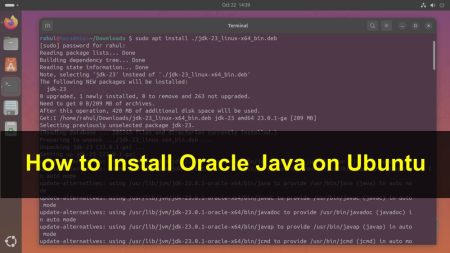In Java, arrays are objects. This means that when you pass an array to a method, you are actually passing the reference to the array and not a fresh copy of the array. This allows for changes made to the array inside the function to reflect outside the function as well. In this article, we’ll dive deep into the process of passing an array to a function (method) in Java and illustrate with examples.
Basics of Array in Java
An array is a collection of elements, all of the same type, and can be defined using the following syntax:
dataType[] arrayName = new dataType[size];
For example, to create an integer array of size 5:
int[] myArray = new int[5];
Passing an Array to a Method
To pass an array to a method, you’ll define the method to accept an array of the appropriate type as a parameter. The syntax is as follows:
public static returnType methodName(dataType[] arrayParameter) {
// method body
}
Let’s look at a simple example:
public class ArrayExample {
public static void main(String[] args) {
int[] numbers = {1, 2, 3, 4, 5};
printArray(numbers);
}
public static void printArray(int[] arr) {
for(int i : arr) {
System.out.print(i + " ");
}
}
}
In the code above, the printArray method accepts an integer array as a parameter and then prints its contents.
Modifying an Array Inside a Method
Since the reference to the array is passed to the method, any changes made to the array inside the method will reflect outside the method as well:
public class ModifyArray {
public static void main(String[] args) {
int[] numbers = {1, 2, 3, 4, 5};
System.out.println("Before modification: ");
printArray(numbers);
modifyArray(numbers);
System.out.println("\nAfter modification: ");
printArray(numbers);
}
public static void printArray(int[] arr) {
for(int i : arr) {
System.out.print(i + " ");
}
}
public static void modifyArray(int[] arr) {
for(int i=0; i<arr.length; i++) {
arr[i] *= 2;
}
}
}
In the example above, the modifyArray method multiplies each element of the array by 2. After calling this method, the changes can be observed in the main method, illustrating that the array reference, not a copy, is what’s passed to methods.
Caveats and Notes
- Performance: Passing an array by reference (as opposed to passing by value) is efficient because it prevents copying the entire array. This can be especially beneficial when dealing with large arrays.
- Safety: Since the array can be modified by any method it’s passed to, one needs to be careful. If you want to ensure that the original array remains unchanged, you might consider creating a copy of the array and passing that copy to the method.
- Null Values: Always ensure that the array you’re passing to a method is not null, or else handle potential NullPointerException inside your methods.
Conclusion
Passing arrays to methods in Java is a straightforward process, thanks to the language treating arrays as objects and passing them by reference. This approach is both efficient and intuitive, but developers should be mindful of the implications concerning data integrity and potential modifications to the array. When in doubt, and to preserve data safety, consider copying the array before passing it to methods.

